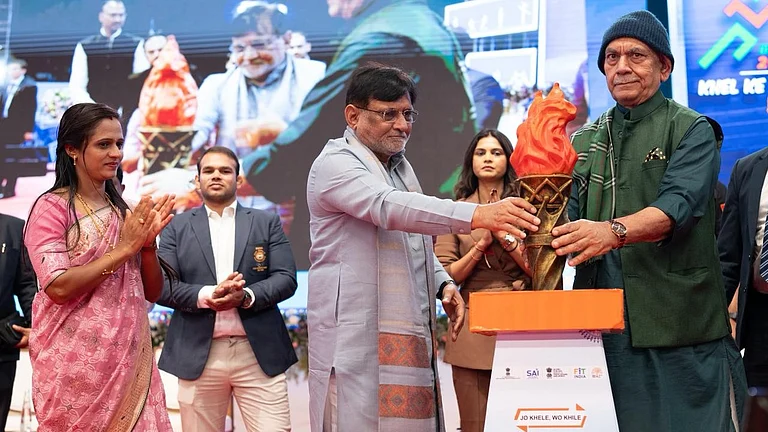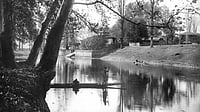Since the arrest of Kashmir’s tallest leader Sheikh Muhammad Abdullah, the strategic 15 Corps (commonly known as Chinar Corps) of the Indian army based in the heart of Srinagar has been at the forefront in carrying out the command of the political dispensation in New Delhi as far as the tumult Jammu and Kashmir is concerned.
The 15 Corps was once again a frontrunner in carrying out New Delhi’s political command during the critical year of 2019 when the strategic-army-base was asked to rope-in and help in maintaining law and order following reading-down of the special status of Jammu and Kashmir.
The recently released book titled ‘Kitne Ghazi Aaye, Kitne Ghazi Gaye’ by the Infantry veteran from the Rajputana Rifles retired Lieutenant General K.J.S. ‘Tiny’ Dhillon spells out how the 15 Corps prepared for D-Day leading upto August 5 with utmost secrecy.

‘Making history’
Published by Penguin Veer, ‘Kitne Ghazi Aaye, Kitne Ghazi Gaye’, has 23 chapters spread over 300 pages. However, it is chapters 16, 17, 18, and 19 which form the backbone of the book. These four chapters deal with three important happenings of the year 2019 that is the Pulwama attack, Balakot strike and the reading down of special status of Jammu and Kashmir. Retired Lieutenant General Dhillon took over as 15 Corps commander on February 10, 2019. On February 14, the first incident in the form of Pulwama attack takes place.
Dhillon writes that he was taken by complete surprise when he received a call in the middle of the night at about 2 a.m., informing him of a breakfast with Home Minister Amit Shah while he (home minister) was on a visit to Srinagar on 26 June 2019.
It was during this meeting that the retired general came to know about the Bharatiya Janata Party’s (BJP) intentions of reading-down the special status of Jammu and Kashmir.
“It is suffice to say that the issues flagged by Mr. Shah included the current law and order situation, the potential for it to deteriorate immediately after any declaration by government (reading down of articles 370 and 35-A), repercussion of the latter on the LOC, and the pros and cons from the perspective of an anticipated Pakistani reaction on the path-breaking declaration that was now certain to follow,” Dhillion writes.
About Union Home Minister Amit Shah, the author writes that he was in absolute control and fully conversant with the meeting agenda and knew without a doubt the level and extent of the information he was seeking.
“He had obviously done extensive research and homework before organiszing this meeting with me and also had his ears to the ground, and was extremely intuitive about the finer details of every issue being discussed.”
During the same meeting when the home minister asked the retired generals about guarantees that the situation will remain peaceful in Kashmir following reading down of the articles, the general writes: ‘I, on my part, give you my personal assurance that there will not be disturbed in any way.’
The retired general writes, ‘my confidence was based on the recent experience of the Team Security Forces in handling the events prior to and post Zakir Musa’s death.’ In May 2019, the militant commander Zakir Musa was killed during a gunfight with the government forces in south Kashmir.
An important anecdote that the retired general shares in ‘Kitne Ghazi Aaye, Kitne Ghazi Gaye’ is about his wife following the meeting with Home Minister Amit Shah. ‘My wife, who had also been awake the whole night due to the multiple telephone calls I was receiving, asked me, how was the meeting with the home minister?’ my instant response to her query was, ‘Bees yuvraj mil kar bhi iss bande ka muqable nahi kar sakte.’
The author is in full praise for the home minister’s understanding of the Kashmir situation and the neighbouring country Pakistan. He writes that home minister’s knowledge and in-depth assessment of the situation, including the likely fallouts was exceptional and that the home minister had not only covered all bases but was ready with counter-plans for every possible eventuality.
The retired general writes that when he was asked about a frank assessment of pre-and-post situation in Kashmir following the reading down of special status, his immediate response was, ‘Agar itihas likhna hai to kisi ko ithas banana padega’.
The secrecy
Secrecy of the plan was an essential component for the security apparatus in Kashmir. And about the secrecy of the plan, the retired general writes that he was the senior most Army officer in Kashmir when the abrogation was declared. No one else in the 15 corps had the slightest prior idea about what was about to come. Even the General Officers Commanding or the staff at Corps Headquarters was kept in dark. He writes that secrecy was the main pre-condition without compromising on the preparations.
The retired general had chosen the Chinar House (official residence of the Chinar Corps Commander inside Badami Bagh Cantonment) as the main base to execute the plan for reading down of the special status.
He writes that the Chinar House was the most secure place where all those who ‘knew it’ used to assemble and discuss minor details of the coming plan. With a hint of pride, the retired general writes that not even a shred of paper went out of the four walls of Chinar House.
Other chapters
The other chapters of the books are anecdotal, candid, and evocative about the journey of a soldier who has served in Kashmir from 1988 till his retirement in 2022. The book also traces the myths, half-truths, whats, ifs and whys of the exodus of the Kashmiri Pandits.
The book also focuses on the personal, professional, and family life of a soldier in the Army. It also talks about in a great deal how the Army in rural and remote areas helps people in various socio-economic sectors.
Importantly, the book gives reader a detailed description about Army’s ‘Operation Maa’. The operation is related to how the government forces tried to rope-in parents to get the youth back from militancy. The retired general claims that the security apparatus gained a lot because of this operation in the valley.
For those defense aspirants and security thinkers who want to know what Indian army thinks, breaths, eats, walks and talks in Kashmir, ‘Kitne Ghazi Aaye, Kitne Ghazi Gaye’ makes a must read for them.
(Daanish Bin Nabi is an independent journalist based in Kashmir. He tweets at https://twitter.com/DaanishBinNabi )






















